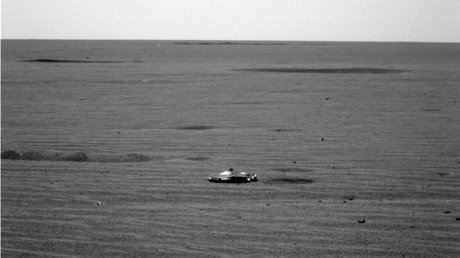Mysterious Easter Island ‘heads’ REALLY did help turn bad soil fertile, study says
A five-year-long excavation of two of the enigmatic Easter Island ‘heads’ has revealed striking new evidence finally linking the enormous stone figures to food production and showing their creation enriched the soil.
Carved by the Rapa Nui people between the 13th and 16th centuries, the iconic monoliths known as ‘moai’ were thought to have some connection to fertility rituals, which until now remained unproven. Several hundred were erected on the island, the largest of which is 10 meters (33 ft) high and weighing some 82 tonnes.
The new research, published in the Journal of Archaeological Science, focused on two of the statues still in the quarry which was the source of almost all of the stone for the moai.
Also on rt.com Easter Island people want return of their sacred statue, stolen by imperial BritsThough it was long thought that the quarry served simply as a point of production for the stone figures, the study says soil samples show that the area was also a rich site for growing food - and not only that, but the process of quarrying and carving were key elements in boosting agriculture at the site.
“When we got the chemistry results back, I did a double take,” soil specialist Professor Sarah Sherwood from the University of the South in Sewanee, Tennessee said of the findings. “There were really high levels of things that I never would have thought would be there, such as calcium and phosphorous.”
While the soil quality everywhere else on Easter Island, or Rapa Nui, was being seriously depleted by erosion and the loss of key plant-nourishing minerals, “in the quarry, with its constant new influx of small fragments of the bedrock generated by the quarrying process, there is a perfect feedback system of water, natural fertilizer and nutrients” to replenish the earth.
The researchers say that the upright statues they studied had clearly been placed in a fixed manner that indicated they were intended as permanent structures in the quarry, and not simply awaiting relocation.
Also on rt.com Suspected ancient MAMMOTH TRAPS uncovered in Mexico City, bones of some 14 giant beasts found (PHOTOS)Think your friends would be interested? Share this story!














